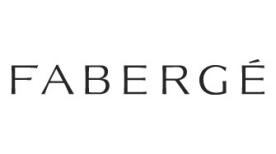The name of Fabergé, for many people, is synonymous with the Imperial Eggs. And that’s no surprise. They were indeed made by Peter Carl Fabergé, jeweller to the Russian imperial court, in the 19th century. Eggs have become more than an icon of the brand: they are its very identity.
Fabergé was born in 1846 in Saint Petersburg; his grandparents were Huguenots who had fled France under Louis XIV to seek refuge in Russia. He became a jeweller and goldsmith to the Russian imperial court, creating fabulous objects and jewels that made him internationally famous. Very soon he found himself courted by royals, aristocrats and art connoisseurs from all over the world who wanted him to create masterpieces for them.
The most famous Fabergé eggs were created for Tsars Alexander III and Nicholas II of Russia, who began a tradition of giving them to their wives at Easter.

The romance of spring
The story began in 1885, when Alexander III gave his wife, Empress Maria Feodorovna, an Easter egg to celebrate the twentieth anniversary of their engagement. The Tsar knew that the Empress was particularly fond of an egg that had belonged to her aunt when she was younger, which was what gave him the idea. The Empress was so delighted and touched by this beautiful and thoughtful gift that Alexander appointed Fabergé “Goldsmith by special appointment to the Imperial Crown” and charged him with creating a new egg every year.
Each egg took a whole year to design and produce. Because he could do no wrong in the Empress’s eyes, Peter Carl Fabergé had absolute freedom when it came to the design of the Imperial Easter Eggs. Even the Tsar had no idea what they would look like, what decorations they would have or what size they would be. His only condition was that each egg should contain a surprise.
Fabergé’s eggs were subtle and always elegant; they came in a wide variety of models and sizes, using different materials and techniques, each one telling a different story.
Today Fabergé Eggs are considered masterpieces of the jeweller’s art and are associated with a time of great opulence and luxury. They were made of precious materials and minerals, and were often decorated with enamels or precious stones. Of the fifty imperial eggs originally produced by Fabergé, forty-three are known to be in existence today.

Easter eggs
The Easter egg is the descendant of a pagan tradition celebrating the end of winter, the birth of spring and the reawakening of life. This ritual was assimilated by Christianity and merged into the Easter festival commemorating the resurrection of Christ.
The Easter egg hunt has become a much-loved Easter Sunday tradition for many children. But not many of them are lucky enough to come across a Fabergé Egg in their garden...








